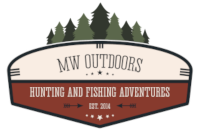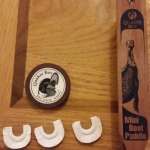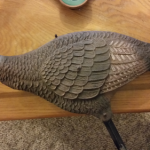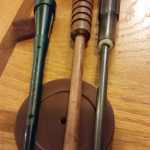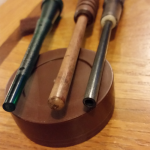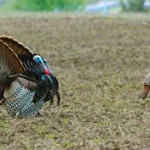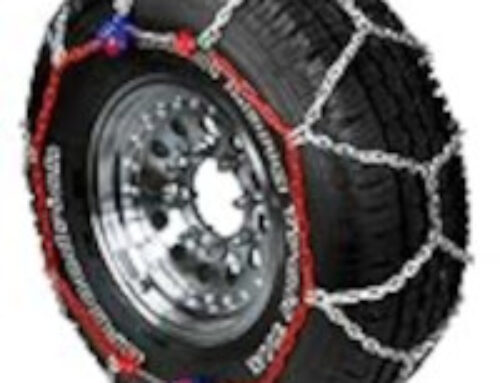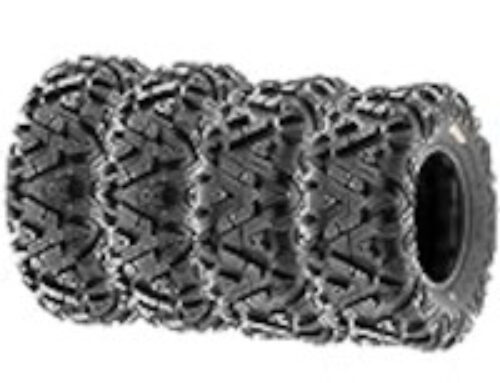Turkey Hunting Is Easier Than You Think
Many hunters say Turkey hunting and calling is difficult, but I’m here to tell you it’s not. The first time I was drawn for a Turkey tag I did not bag my bird, but I learn enough that week that I told my friends next year I will have my turkey by lunch time, they laughed. The following year I bagged my Tom within the first hour of hunting.
Locating Tom Turkeys
Here are some tips for locating hard to find elusive Gobblers, especially on new unfamiliar ground. First look for high ground roosts over looking swamps, river bottoms, or protruding knobs off the side of ridges facing the morning sun. Big birds love to strut on those sunny spots to warm up on a cool morning. Now how do you find out if the birds are there; you can scout the night before using binoculars and see where the birds are moving, or you can listen for the Crows cawing and carrying on as they love to harass turkeys, but there is a better way. By using a loud call right at dark those roosted Toms will answer with a gobble. This will also work early in the morning before the birds leave the roost, which will give you plenty of time to set up for the morning hunt. To locate those Toms I like to use a Turkey diaphragm call, this works well and is very loud. you could also use a crow or predictor call.
Turkey Calls and Decoy
You do not need to be an expert to call in turkeys or to use decoys, I’m proof of that. It only took me one season to learn what the turkeys wanted and I have bagged my Tom every hunt since. The items I use for taking Toms are; Quaker Boy mouth diaphragms for making a loud noise (locate the Toms), Quaker Boy Mini Boat Paddle for gobbling or hen calling, Quaker Boy Bullseye Slate call for hen calling, and a hen decoy. That’s it and it works.
How To Use These Calls And The Decoy
The turkey diaphragms I use only for locating the Toms. I will get to woods a good hour before the Turkeys leave the roost, this way I can locate the Toms and have plenty of time to setup in a ideal location or an advantage point. The box call I use for gobbling and making hen chirps, and the slate call I use for hen calling. The decoy I will set up in the woods or field 10 Yards in front of me. If I do not get a Tom to come in, I then use the decoy for stalking.
Did you notice the 3 different strikers for the slate call? I have a wooden striker, hollow plastic striker, and a solid plastic striker along with the box call for hen calling. The advantage of this is that each produces a different pitch (frequencies) for hen chirps. Depending on the weather, landscape, and turkeys you will find one pitch (striker) will work better than another on differ days or times of the day. A trick that I picked up early and found very helpful.
Successful Turkey Hunts
My success has come from calling in the hens not the Toms and by stalking the Toms, which I really enjoy and is how I shoot most of my birds. Why, because the Toms quit gobbling about a hour after they leave the roost, but they are still out there looking for hens. So this is the time to use your different calls or diaphragms to force a gobble and locate them. When calling always be ready in case there is a Tom not yet with a hen, as he will come in fast. Once you have waited a few minutes move in a ways and call again. Once you get within a 100 yards of where the Toms are gobbling back start to crawl and keep your decoy out in front of your face, hiding/crawling behind it.
Stalking My First Tom
The first time I stalked a Tom I was with my oldest son, he was 13 years old at that time, and we crawled up on 7 Toms or that’s what I thought until the eight Tom came up from the right side of the ridge right after I gave a light hen chirp. This Tom stopped 1 foot in from of my son and started his mating ritual dance, close enough for him to tackle it if he had wanted. Unaware of this Tom and focused on the other 7 my son, in a low whisper, kept saying dad, dad. Once I look back to my lower right at him I saw the Tom all spread out and dancing. Of course I could not shoot, but knowing a Tom can not do much with their feathers all spread-out I dropped my decoy, dropped the call, and got up on my knees. At that time the Tom started to run and once it was safe to shoot I bagged him. What was really educational was how that Tom was less than a few feet away and yet did not see us as a threat, but was only focused on the hen decoy. After 20 years of hunting turkeys I still use this stalking technique and it makes the hunt more exciting over sitting all day.
Turkey Facts
*Yes Turkeys have great eye sight.
*Yes you can stalk turkeys and get within shooting range. Even if you mess up you can circle and set up again for another opportunity.
*Toms are out all day looking for the hens, even if the hens are on the nest.
*Turkeys will lay down and play dead if caught off guard in the open or in a field. I have walked within 15 feet of them doing this.
*Turkeys will work together and alert each other if they since danger. I have seen a dozen or more Toms form a large circle, each one frozen and looking outwards when they heard me move, what a site it was.
